The French Connection
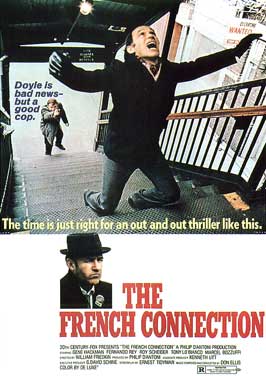 Besides still being the quintessential “cop vs. international drug traffickers” flick and winning a boatload of Oscars, The French Connection also helped to establish director William Friedkin and star Gene Hackman as major talents. Hackman would hold onto his status for decades while Friedkin’s career would continue to rise before a major fizzle out.
Besides still being the quintessential “cop vs. international drug traffickers” flick and winning a boatload of Oscars, The French Connection also helped to establish director William Friedkin and star Gene Hackman as major talents. Hackman would hold onto his status for decades while Friedkin’s career would continue to rise before a major fizzle out.
In still maybe his greatest role, Hackman plays the doggedly determined New York narcotics detective Jimmy “Popeye” Doyle. Even when off work having drinks (and like most movie cops he has lots of them) he’s putting a tail on potential dope-peddling mobster creeps. He plays his hunches, which have paid off before, but more often than not have gotten him in trouble or made him look foolish. He’s a new kind of film cop—he’s as hard-boiled as Bogart but less heroic and certainly less likable. With his overt racism and lack of ethics, he’s all about busting the bad guys at any cost. With his slightly more rational sidekick Russo (Roy Scheider, in the first of his many cop roles in the ‘70s), they have a natural inclination to fight their bosses as much as the criminals. (Interestingly this was the same year that Dirty Harry was released, another famous rebel-cop.)
The Psycho Legacy
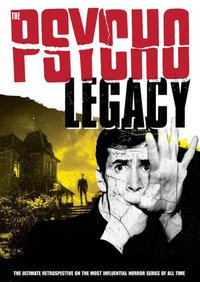 With so many books and documentaries made over the decades covering every aspect of Alfred Hitchcock’s amazing career and more specifically his masterpiece Psycho, what more can possibly be said about the subject? Director Robert V. Galluzzo manages to find a new and surprisingly fresh angle— instead of mulling over the influences on Hitchcock, we are reminded of the massive influence Psycho had. With an interesting group of talking heads, all obvious enthusiasts, they first contemplate the mythology that Psycho brought to cinema, but quickly they get to what makes the documentary most unique which is the study of the Psycho film sequels that sprung up some years later. Though not as commercially successful as many current horror film series, Galluzzo’s posse does manage to convince that they are worth a look.
With so many books and documentaries made over the decades covering every aspect of Alfred Hitchcock’s amazing career and more specifically his masterpiece Psycho, what more can possibly be said about the subject? Director Robert V. Galluzzo manages to find a new and surprisingly fresh angle— instead of mulling over the influences on Hitchcock, we are reminded of the massive influence Psycho had. With an interesting group of talking heads, all obvious enthusiasts, they first contemplate the mythology that Psycho brought to cinema, but quickly they get to what makes the documentary most unique which is the study of the Psycho film sequels that sprung up some years later. Though not as commercially successful as many current horror film series, Galluzzo’s posse does manage to convince that they are worth a look.
Though the documentary only uses quick muted clips from the films, the stills and the talking heads are engaging enough that you may not even notice. It mentions early on, briefly, that William Castle spent a decade trying to rip-off Psycho (Straight-Jacket, Homicidal, etc.), but the dozens of French thrillers and Italian horror flicks that were directly influenced by Hitchcock are ignored. Hell, if you want to talk about Psycho’s legacy (and Hitchcock’s) Brian De Palma’s had a whole career doing bad Hitchcock (until later when he discovered other genres to steal from). The Psycho Legacy also avoids Gus Van Sant’s pointless scene-for-scene remake and the short-lived Bud Court TV Series The Bates Motel. No, the Psycho legacy these guys are itching to rap about are the three “sequels.”
The Island of Dr. Moreau
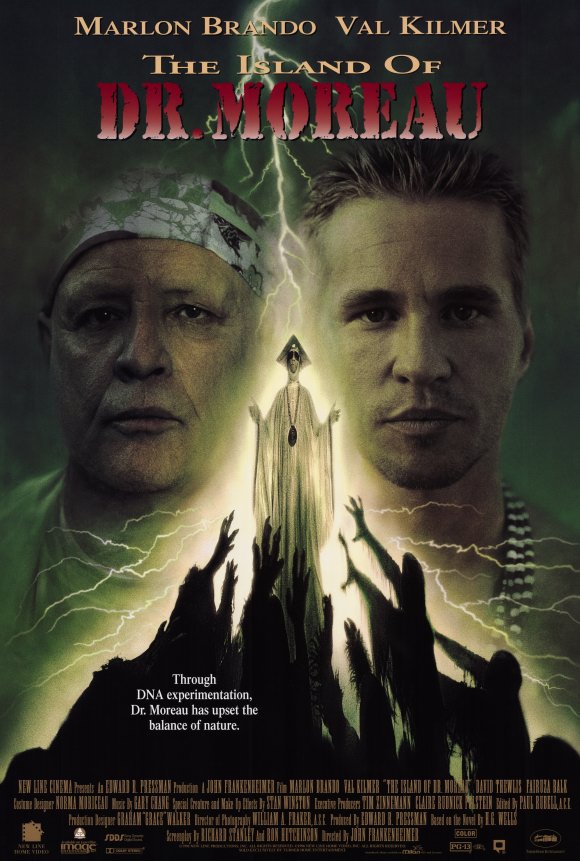 In terms of guilty pleasures, John Frankenheimer’s 1996 kinda/sorta adaptation of H.G. Wells’s novel The Island of Dr. Moreau may elicit the most guilt but certainly a lot of pleasure. By most standards the film is a complete mess with a legendarily ugly story of getting to the screen. It’s utterly indulgent and over the top, but it also has a giddy grotesqueness that makes it completely entertaining. Like its characters it reeks of madness, in one of those “what were they thinking” kinds of ways. Much more interesting than the ‘70s Burt Lancaster version, this later edition plays like a long, drug-fueled trip you wish would end but that the next day you think back and decide maybe it wasn’t so bad after all.
In terms of guilty pleasures, John Frankenheimer’s 1996 kinda/sorta adaptation of H.G. Wells’s novel The Island of Dr. Moreau may elicit the most guilt but certainly a lot of pleasure. By most standards the film is a complete mess with a legendarily ugly story of getting to the screen. It’s utterly indulgent and over the top, but it also has a giddy grotesqueness that makes it completely entertaining. Like its characters it reeks of madness, in one of those “what were they thinking” kinds of ways. Much more interesting than the ‘70s Burt Lancaster version, this later edition plays like a long, drug-fueled trip you wish would end but that the next day you think back and decide maybe it wasn’t so bad after all.
After surviving a plane crash and now lost at sea, United Nations worker Edward Douglas (David Thewlis) ends washed up on some kind of hidden private island (the kind that may have existed in H.G. Wells’s day). It’s actually an experimental playground for ex-respected superstar mad scientist Dr. Moreau (Marlon Brando). He was once on the cover of Newsweek but his crazy ideas had him laughed out of academia. Slowly Edward begins to grasp what is happening here, with the help of his zonked-out, druggy assistant, Montgomery (Val Kilmer). Moreau has been playing with DNA and turning exotic wild animals into half-men, some more successfully than others. His father/god complex has alienated the wilder ones who feel enslaved; they put together a rebellion against their full human captors.
Reversal of Fortune
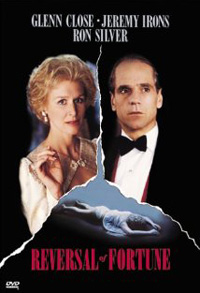 For any lawyer wannabes, Reversal of Fortune works as a thrilling look at how you build a legal case and, at the same time, it’s a fascinating and often darkly humorous peek into the bizarre world of the Waspy jet set scene. And it’s all apparently a true story, based on the book by lawyer and Harvard professor Alan Dershowitz (played by Ron Silver) who documented his work on the acquittal case of the creepy rich slime bag Claus von Bulow (Jeremy Irons). Claus was originally found guilty in the attempted murder of his drug addicted heiress wife, Sunny (Glenn Close). For actors Irons and Silver Reversal of Fortune provided them with the best performances of their careers. (Irons won a well-deserved Oscar for his brilliant work, though truthfully it was a weak year.) For Iranian-born director Barbet Schroeder, who originally made his mark in French cinema, it’s his best English language non-documentary film (with Barfly being a close second).
For any lawyer wannabes, Reversal of Fortune works as a thrilling look at how you build a legal case and, at the same time, it’s a fascinating and often darkly humorous peek into the bizarre world of the Waspy jet set scene. And it’s all apparently a true story, based on the book by lawyer and Harvard professor Alan Dershowitz (played by Ron Silver) who documented his work on the acquittal case of the creepy rich slime bag Claus von Bulow (Jeremy Irons). Claus was originally found guilty in the attempted murder of his drug addicted heiress wife, Sunny (Glenn Close). For actors Irons and Silver Reversal of Fortune provided them with the best performances of their careers. (Irons won a well-deserved Oscar for his brilliant work, though truthfully it was a weak year.) For Iranian-born director Barbet Schroeder, who originally made his mark in French cinema, it’s his best English language non-documentary film (with Barfly being a close second).
Showing his ultimate admiration for the legal system, attorney Dershowitz comes off as very compelling and very righteous (in real life, he has since become a high profile celebrity ambulance-chaser and staunch anti-Palestinian bulldog). He explains to his team, made up of current and ex-students, including his ex-girlfriend (Annabella Sciorra), his reasons for agreeing to defend someone as unlikable as von Bulow by reasoning that even rich people deserve fair trials. Also, his high fees will pay for their more sympathetic pro bono cases.
The Wanderers
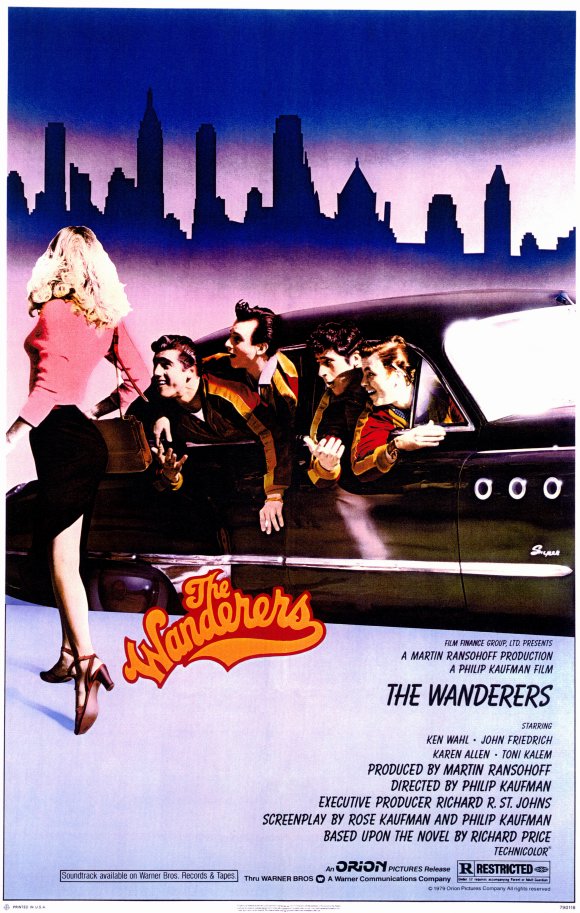 That period in American history as the country moved from the Eisenhower conformism of the ‘50s to the freedom of the ‘60s has made for some wonderful films (American Graffiti, Baby It’s You), even if they often prove to be overly wistful. The Philip Kaufman film The Wanderers, based on Richard Price’s great novel, captures this period perfectly. It takes place in 1963 and though these teenagers of the Bronx who are the film's subject do stop to watch some JFK assassination news, they have no idea that a cultural youth quake could soon open them up to a whole new world. Not since West Side Story had gang life been as romanticized as it was in the ‘70s with the T-Birds of Grease, The Warriors, The Hollywood Knights andThe Lords of Flatbush (only of note because of the presence of a pre-stardom Henry Winkler and Sylvester Stallone). Though perhaps now a cult film because of years of people discovering it on cable, The Wanderers really is a lost gem and the best of its genre.
That period in American history as the country moved from the Eisenhower conformism of the ‘50s to the freedom of the ‘60s has made for some wonderful films (American Graffiti, Baby It’s You), even if they often prove to be overly wistful. The Philip Kaufman film The Wanderers, based on Richard Price’s great novel, captures this period perfectly. It takes place in 1963 and though these teenagers of the Bronx who are the film's subject do stop to watch some JFK assassination news, they have no idea that a cultural youth quake could soon open them up to a whole new world. Not since West Side Story had gang life been as romanticized as it was in the ‘70s with the T-Birds of Grease, The Warriors, The Hollywood Knights andThe Lords of Flatbush (only of note because of the presence of a pre-stardom Henry Winkler and Sylvester Stallone). Though perhaps now a cult film because of years of people discovering it on cable, The Wanderers really is a lost gem and the best of its genre.
In a newly integrated Bronx neighborhood, Ritchie (Ken Wahl, an actor who had the toothy good looks and acting chops to be a big star, but his personal life derailed his career) leads the Italian American gang the Wanderers. He’s a stud and has his sights on bohemian chick Nina (played by the adorable Karen Allen), but when he knocks up the daughter of a local mobster, he’s pushed into a shotgun marriage. The Wanderers’ tough-talking runt Joey (John Friedrich) shows potential as an artist but his overly macho father discourages his sensitive side. He befriends his new neighbor Perry (Tony Ganios of Porky's fame), a big sweet brute with his own parental problems. The other main gang member is Turkey (Alan Rosenberg), but he has his sights on joining the much tougher posse, the Fordham Baldies (they’re lead by Erland van Lidt, the big bald dude in Stir Crazy). Turkey shaves his head to look like them but still never seems to win them over.
LBJ (The American Experience)
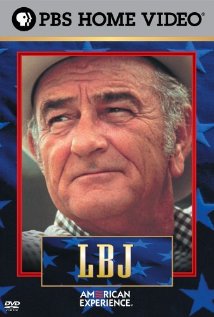 Whether it’s the Kennedys, Nixon, or FDR you can’t go wrong with any of the thoroughly epic political biographies produced by PBS for their American Experience television series. To understand the turbulent sixties no documentary gives a better overview than the exhausting, yet exuberant, Lyndon Johnson bio called, simply enough, LBJ. Johnson’s life was full of both contradictions and surprises; in the end he both represents and played a major hand in both the best and worst legacies of the decade.
Whether it’s the Kennedys, Nixon, or FDR you can’t go wrong with any of the thoroughly epic political biographies produced by PBS for their American Experience television series. To understand the turbulent sixties no documentary gives a better overview than the exhausting, yet exuberant, Lyndon Johnson bio called, simply enough, LBJ. Johnson’s life was full of both contradictions and surprises; in the end he both represents and played a major hand in both the best and worst legacies of the decade.
The film unfolds in four hour-long chapters. Episodes one and two cover a lot of ground: LBJ’s early years as the son of a Texas politician, his marriage to Ladybird, and his wins and losses in the rough world of Texas politics. He became a grand deal-making charmer first in the House of Representatives and then in the Senate. His humbling run as JFK’s vice president ended after those gunshots rang out in Dallas simultaneously throwing history a curve ball and making Johnson the president. Finishing Kennedy’s term he out-Kennedyed the Kennedys by passing loads of important legislation and was overwhelmingly reelected by the American people. And that’s when the second half kicks in, covering those disastrous last four years and beyond as his amazing social triumphs were overshadowed by the escalating war in Vietnam—a war which he inherited but naively continued to send the country deeper into.
The Day of the Triffids
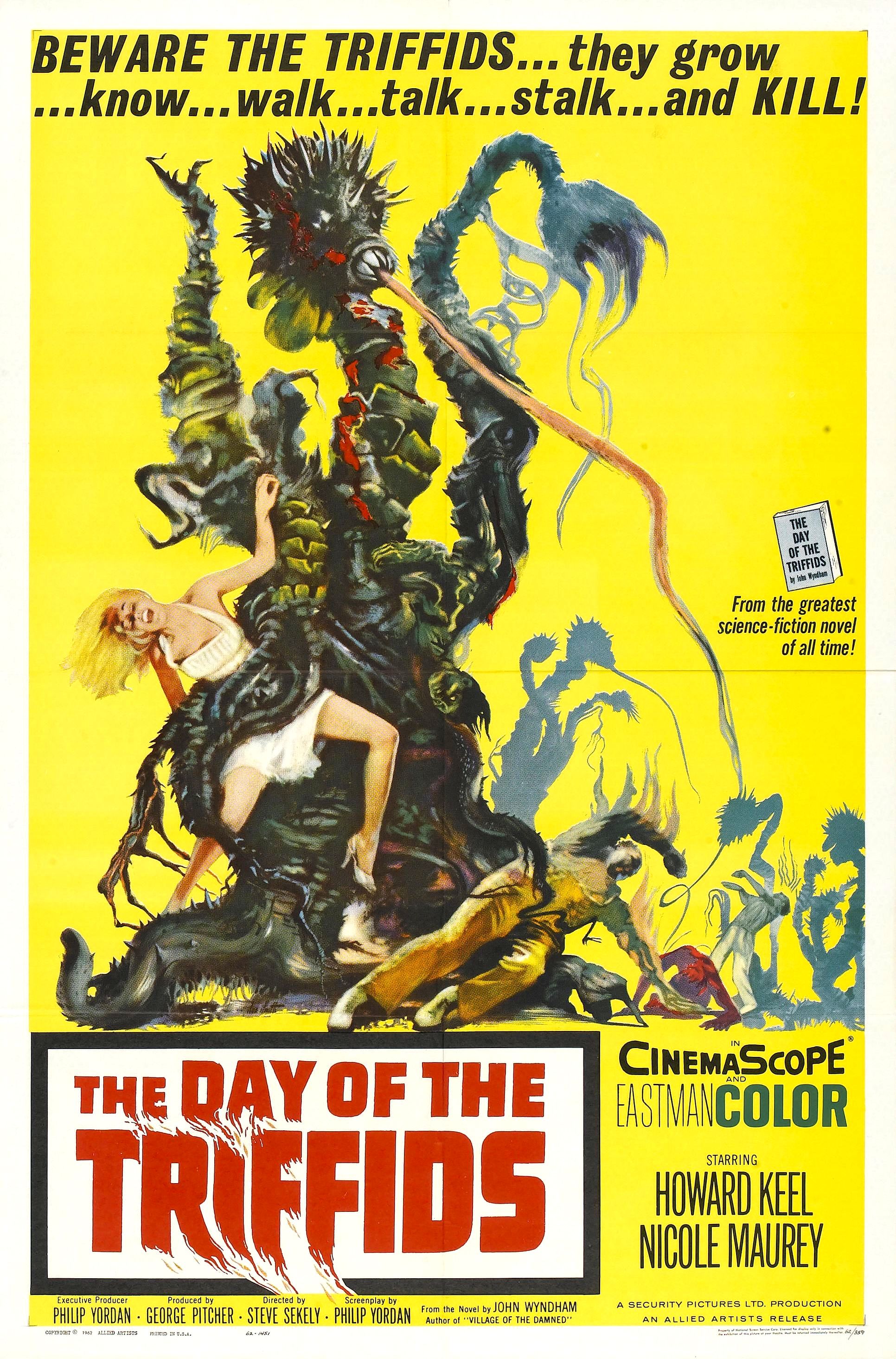 Though not in the same league with John Wyndham’s brilliant sci-fi novel that it’s based on, the low budget 1962 film version of The Day of the Triffids is still a heady piece of post-apocalyptic entertainment and still one of the best and most influential end-of-the-world films ever. A more faithful to the book version was made for BBC TV in 1981 and it’s also essential “survivor movie” viewing. (A more recent TV version in 2009 was terribly disappointing.) But while this first on-screen edition may veer from the book, it was a landmark in British B-movie sci-fi and in a lot of ways it still packs a wallop.
Though not in the same league with John Wyndham’s brilliant sci-fi novel that it’s based on, the low budget 1962 film version of The Day of the Triffids is still a heady piece of post-apocalyptic entertainment and still one of the best and most influential end-of-the-world films ever. A more faithful to the book version was made for BBC TV in 1981 and it’s also essential “survivor movie” viewing. (A more recent TV version in 2009 was terribly disappointing.) But while this first on-screen edition may veer from the book, it was a landmark in British B-movie sci-fi and in a lot of ways it still packs a wallop.
With all of London excited about watching an astounding meteor shower outside, American merchant seaman, Bill Masen (Howard Keel) is stuck in a hospital bed with his eyes bandaged after surgery. The next day he awakens to find that the hospital staff and then the entire town are now blind (everyone who watched the sky that night at least). If having to navigate among the desperately blind isn’t apocalyptic enough, it seems a deadly plant known as a Triffid is also on the loose—these are walking shrubs that shoot a poisonous stinger at their victims and if that’s not bad enough they have the ability to verbally communicate with each other. Eventually Bill comes across a little girl (Janina Faye) who can see and the two have to fight their way out of England and make it to France. Once there they help a group of blind women, including a pretty love interest (Nicole Maurey), while trying to escape a group of violent convicts as they head for Spain.
The Bridge on the River Kwai
 After his weepy romantic travelogue Summertime, director David Lean took an evolutionary jump with The Bridge on the River Kwai, the first part of his super epic trilogy (followed by Lawrence Of Arabia and Doctor Zhivago). If The Great Escape is the ultimate German prisoner of war flick (with apologies to Stalag 17) then Kwai is the quintessential Japanese POW story. The performances are top notch—the British chameleon Alec Guinness deservedly won an Oscar for his powerful performance. As both a human drama, a giant war spectacular, and just a kick-ass action flick Kwai is still a hair-raiser with a famously shocking ending.
After his weepy romantic travelogue Summertime, director David Lean took an evolutionary jump with The Bridge on the River Kwai, the first part of his super epic trilogy (followed by Lawrence Of Arabia and Doctor Zhivago). If The Great Escape is the ultimate German prisoner of war flick (with apologies to Stalag 17) then Kwai is the quintessential Japanese POW story. The performances are top notch—the British chameleon Alec Guinness deservedly won an Oscar for his powerful performance. As both a human drama, a giant war spectacular, and just a kick-ass action flick Kwai is still a hair-raiser with a famously shocking ending.
A cynical American POW named Shears (William Holden, cynical was his trademark in the fifties) watches Colonel Nicholson (Guinness) lead his British regiment into a Japanese camp deep in the harsh jungles of Burma (while whistling the “Colonel Bogey March” which became a hit record). There the prisoners working as slave laborers are building a military bridge, but Nicholson will not work and demands to keep his rank among his men. A battle of wills takes place between the overly proud Brit and the camp’s Japanese commander, Saito (Sessue Hayakawa). The Japanese do everything to break the will and pride of Nicholson to no avail. Eventually the two opposing leaders reach a compromise. Nicholson is given full dignity and instead of forcing his men to chore as slaves, they will build the bridge under their own British commanders. For Nicholson this is a chance to show the Japanese how superior both the British way of life and work ethic are and to build the morale of his men.
Purple Rain
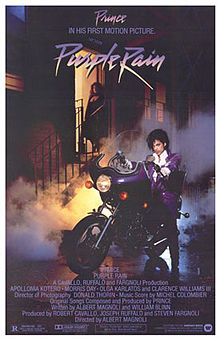 As opposed to being a dated period piece from 1984, Purple Rain is more like a time capsule from another planet. A truly ambitious film debut for funk ‘n rock star Prince, the success of both the film Purple Rain and its soundtrack helped send Prince’s career into another stratosphere. This kinda sorta autobiography of Prince’s early days playing at Minneapolis music venue First Avenue focuses on the struggles of the brooding and mopey musician as he tries to navigate his domestic abuse impulses and his love of frilly shirts. Though completely entertaining it’s actually maybe more depressing than the Eminem flick 8 Mile though not even close to the mental anguish that the Bjork film Dancer in the Dark can cause. At the time of release Purple Rain was a massive hit but it was also justly scorned for its misogynistic attitudes towards women. Luckily now the film feels so over the top that instead of being offensive it plays more like a glammed-out cartoon.
As opposed to being a dated period piece from 1984, Purple Rain is more like a time capsule from another planet. A truly ambitious film debut for funk ‘n rock star Prince, the success of both the film Purple Rain and its soundtrack helped send Prince’s career into another stratosphere. This kinda sorta autobiography of Prince’s early days playing at Minneapolis music venue First Avenue focuses on the struggles of the brooding and mopey musician as he tries to navigate his domestic abuse impulses and his love of frilly shirts. Though completely entertaining it’s actually maybe more depressing than the Eminem flick 8 Mile though not even close to the mental anguish that the Bjork film Dancer in the Dark can cause. At the time of release Purple Rain was a massive hit but it was also justly scorned for its misogynistic attitudes towards women. Luckily now the film feels so over the top that instead of being offensive it plays more like a glammed-out cartoon.
Prince plays “The Kid,” and though his band The Revolution seems to have a loyal following, the club owner (Billy Sparks) thinks they aren’t drawing the crowds they should be. He seems to side with The Kid’s chief rival, the zoot-suited Morris Day and his band The Time. He wants the Kid to stop doing that “one song shit” and making the kind of music that only he understands, or he’s going to be axed from the club’s roster. When a foxy new Russ Meyer-esqe babe, Apollonia shows up on the scene, The Kid woos her with motorcycle rides and by ogling her from behind his oversized sun glasses. Strangely he still lives with his parents, where his washed-up musician father (Clearance Williams III of Mod Squad fame) beats up his mother (Olga Karlatos who was in Lucio Fulci’s Zombie) on a nightly basis—a habit The Kid seems to be picking up with Apollonia. And like the song lyrics go, “maybe I’m just like my father, too bold. Why do we scream at each other? This is what it sounds like when doves cry.”
Traffic
 After his massive debut film Sex, Lies, and Videotape helped jump start the impressive independent film movement of the 1990s, director Steven Soderbergh had a rough go in the world of filmmaking. Though his follow-ups King of The Hill, Kafka, and The Underneath were all interesting, none lived up to the promise shown earlier. It wasn’t until the end of the decade that Soderbergh started to really find his stride with a pair of terrific crime thrillers, Out of Sight and The Limey. Often working as his own cinematographer his films developed a grainy, handheld look and an almost docudrama feel. In 2000 Soderbergh peaked critically with the solid drama Erin Brockovich and his two-and-a-half hour epic Traffic, a truly outstanding look at the drug trade in both the United States and Mexico.
After his massive debut film Sex, Lies, and Videotape helped jump start the impressive independent film movement of the 1990s, director Steven Soderbergh had a rough go in the world of filmmaking. Though his follow-ups King of The Hill, Kafka, and The Underneath were all interesting, none lived up to the promise shown earlier. It wasn’t until the end of the decade that Soderbergh started to really find his stride with a pair of terrific crime thrillers, Out of Sight and The Limey. Often working as his own cinematographer his films developed a grainy, handheld look and an almost docudrama feel. In 2000 Soderbergh peaked critically with the solid drama Erin Brockovich and his two-and-a-half hour epic Traffic, a truly outstanding look at the drug trade in both the United States and Mexico.
A remake of the British TV mini-series Traffik, Soderbergh’s film follows the original very carefully, but expands on the political potholes faced by the politicians while changing the land of the traffickers from Pakistan to Mexico. It all adds up to a more complex tale. The film follows three stories taking place in Tijuana, San Diego, and Ohio. Each story is given a different look and color scheme—Ohio looks cold and blue, while Mexico is washed out and yellow. The film is giant with over a hundred speaking roles, and even includes actual politicians Barbara Boxer and Orrin Hatch playing themselves for added realism.





